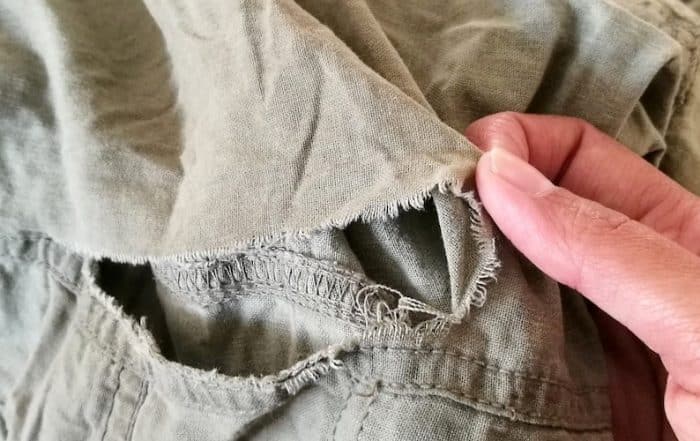Patagonia wants more clothing repaired via United Repair Center
At the United Repair Center in Amsterdam, refugees repair clothing from Patagonia and other brands. If it'd be up to this initiator and customer, more brands will soon join. Willem Swager: “You can see repair as a cost item, but it is much more interesting to see it as a unique moment to get in touch with your customer.”
By repairing a piece of clothing, it can last for years and there is no need to buy a new product. That is precisely why repair is in the DNA of clothing brand Patagonia. Founder Yvon Chouinard taught himself how to repair and reuse climbing tools in the 1950s. For nearly 50 years now, customers were able to have their Patagonia products repaired – mostly free of charge. For example, last year the company carried out more than 13,000 repairs in Europe alone.
Willem Swager is financial and operational director for Europe and Patagonia is a member of the Network Council of the Amsterdam Economic Board and of the steering group for the Green Deal Circular Textiles in the Amsterdam Metropolitan Area. The brand is growing in Europe. Just like the need for more repair capacity. Swager also felt a need for more regional ties. Two years ago, he suggested founding a regional repair center at one of the round table discussions on circular textiles, organized by the Amsterdam Economic Board. Various organizations followed suit and a repair shared service center became a sub-initiative of the regional Green Deal.
With MakersUnite, Patagonia and several other organizations have been working to set up the United Repair Center (URC), which officially opened on July 1st. The URC remains part of the Green Deal Circular Textiles , in which companies, governments and knowledge institutions from the Amsterdam Metropolitan Area work in various sub-initiatives on a circular future for textiles in the region.
The right people
Social venture MakersUnite provided the right people for the URC, mostly employees with a refugee status. Patagonia shared knowledge and experience from repair centers in France and Portugal, among others. “As a brand, having your own clothing repaired is quite an operation,” says Swager. “You have to determine whether repair is an option, arrange for transport of the garment and ensure that it is eventually repaired and returned to the customer. This requires a physical infrastructure, but also an IT infrastructure to make everything run smoothly.”
To also reduce the travel distance of products, Patagonia wants to repair as locally as possible. Mass is needed for that, which is why cooperation with other brands in the United Repair Center is important. Also to absorb seasonal peaks. Swager: “We see a peak in the number of repairs a few weeks before the winter sports season and in the summer season. To operate stably, a repair center needs a continuous supply of garments.”
Swager is therefore bringing the URC to the attention of other brands with offices in the Amsterdam Metropolitan Area. Growth would also have a downside: more skilled people would be needed to repair clothes. “Some repairs are very technical, such as replacing a waterproof zipper,” explains Swager. “You really need to have the right skills to do that well. Hence it’s important to involve educational institutions. They must train more people for this.”
Repair as an opportunity
For many brands, offering repair is still new, scary and they mainly see it as an expense. “ That is possible, but we see it as a unique opportunity for contact with your customer,” says Swager. “There are fewer and fewer of these, also because we can’t reach customers as much through targeted advertising – as the use of online cookies is restricted. If a customer comes to request a repair, you have a very suitable moment to bring your brand to the attention. That is also worth a lot. We sometimes speak to customers who have had the same jacket for 20 years.” The costs of repair can be included in the sales price. By making frequent repairs, you also learn about the weak spots in products and you can adjust the design.
If those arguments aren’t convincing enough, there are other factors in the market forcing brands to consider repairs. Swager: “Consumers are becoming increasingly empowered and are demanding more commitment from brands. There are European directives and the extended product responsibility for textiles that the Dutch government is working on. These further increase the pressure on textile producers. So you cannot avoid considering this.”
Sixfold more repairs
Patagonia’s ambition is to sixfold the number of repairs in Europe. The marketing machine for that has yet to be turned on, Swager says. “We are going to give it a lot of effort in the coming years and we are already in contact with various other companies that want to participate in this ‘repair journey’. To make a real impact, we need to scale up.”
Swager therefore hopes that in a few years’ time the United Repair Center will be supported by several brands: “I hope that it will then be a large company that will undergo many repairs and where many people will have the opportunity for training and/or a job in the field.” their own level. If so, the United Repair Center is a wonderful showcase for cities such as Berlin and Milan, where we are also active. Also for companies offering repairs while that’s still an exciting concept to them.”
Text: Mirjam Streefkerk
1 July 2022
Read more about
Contact us
Want to keep up to date?
Get the best regional news and events (in Dutch) via the Board Update newsletter
Share this news
Want to keep informed?
Follow us daily on LinkedIn and sign up for the Board Update newsletter.
Read more
- What AI applications are we already deploying for healthcare and wellbeing? What ...
- Adyen is one of the great success stories of Amsterdam’s tech ...
- Together with enthusiastic partners in three coalitions, the Amsterdam Economic Board is ...




